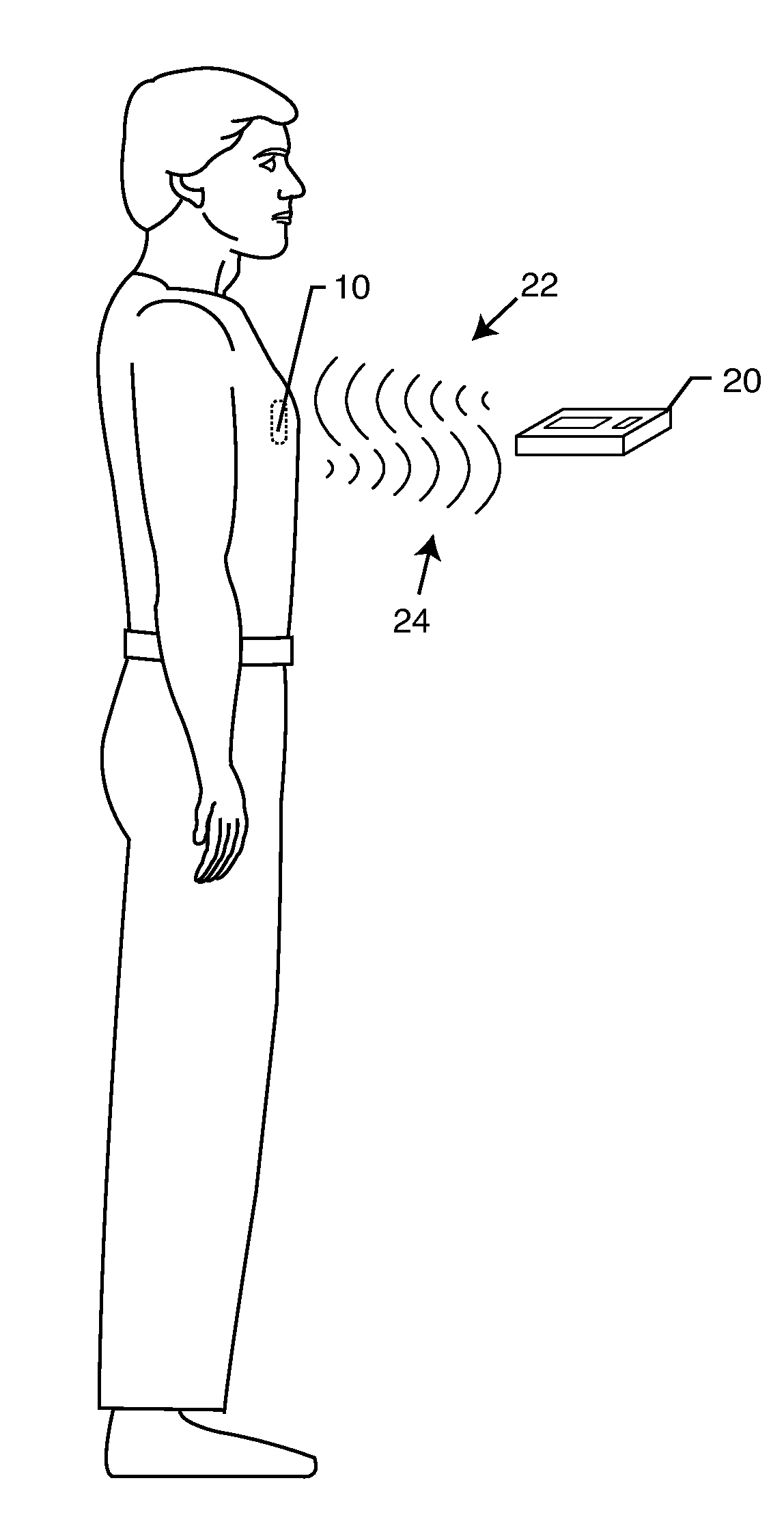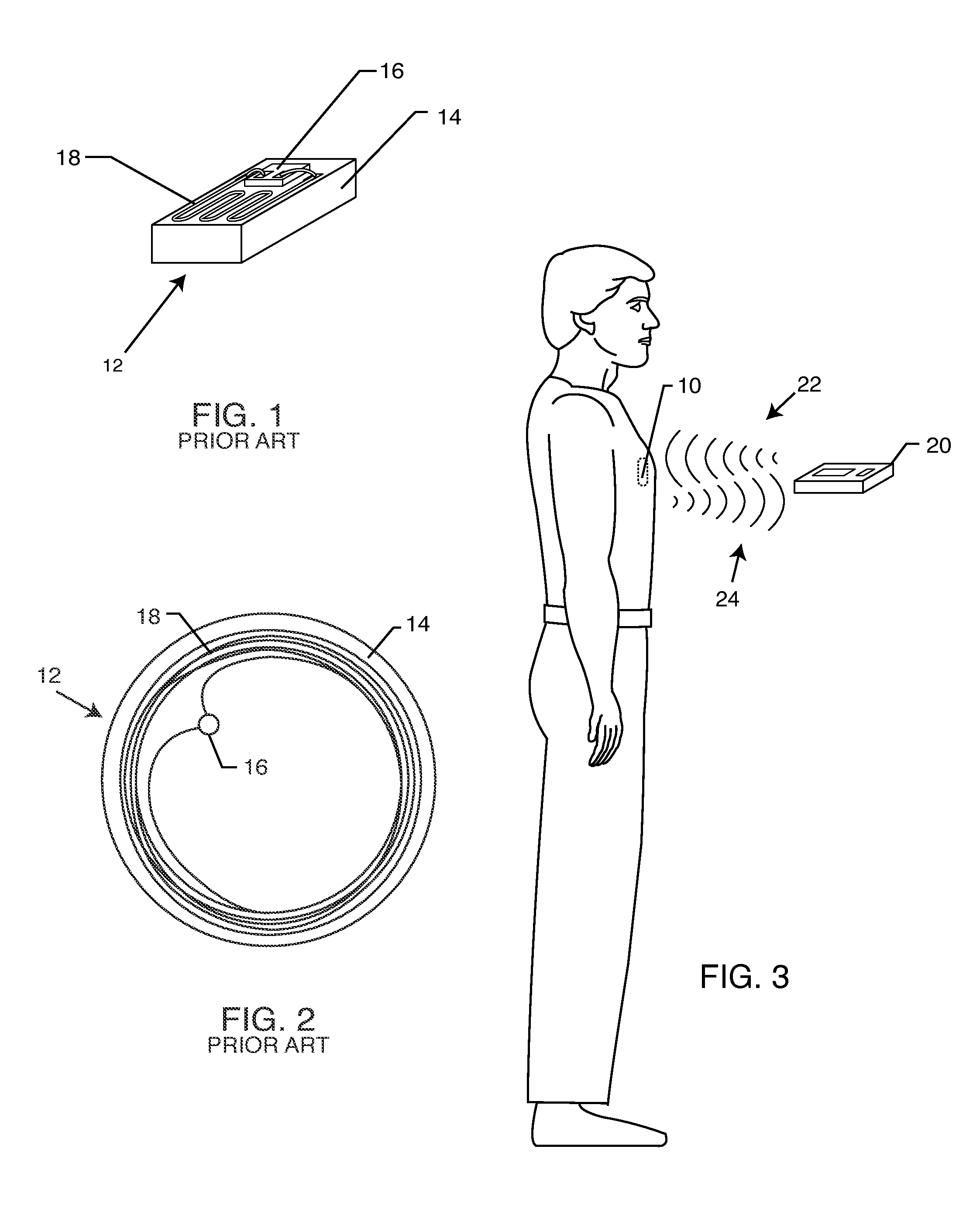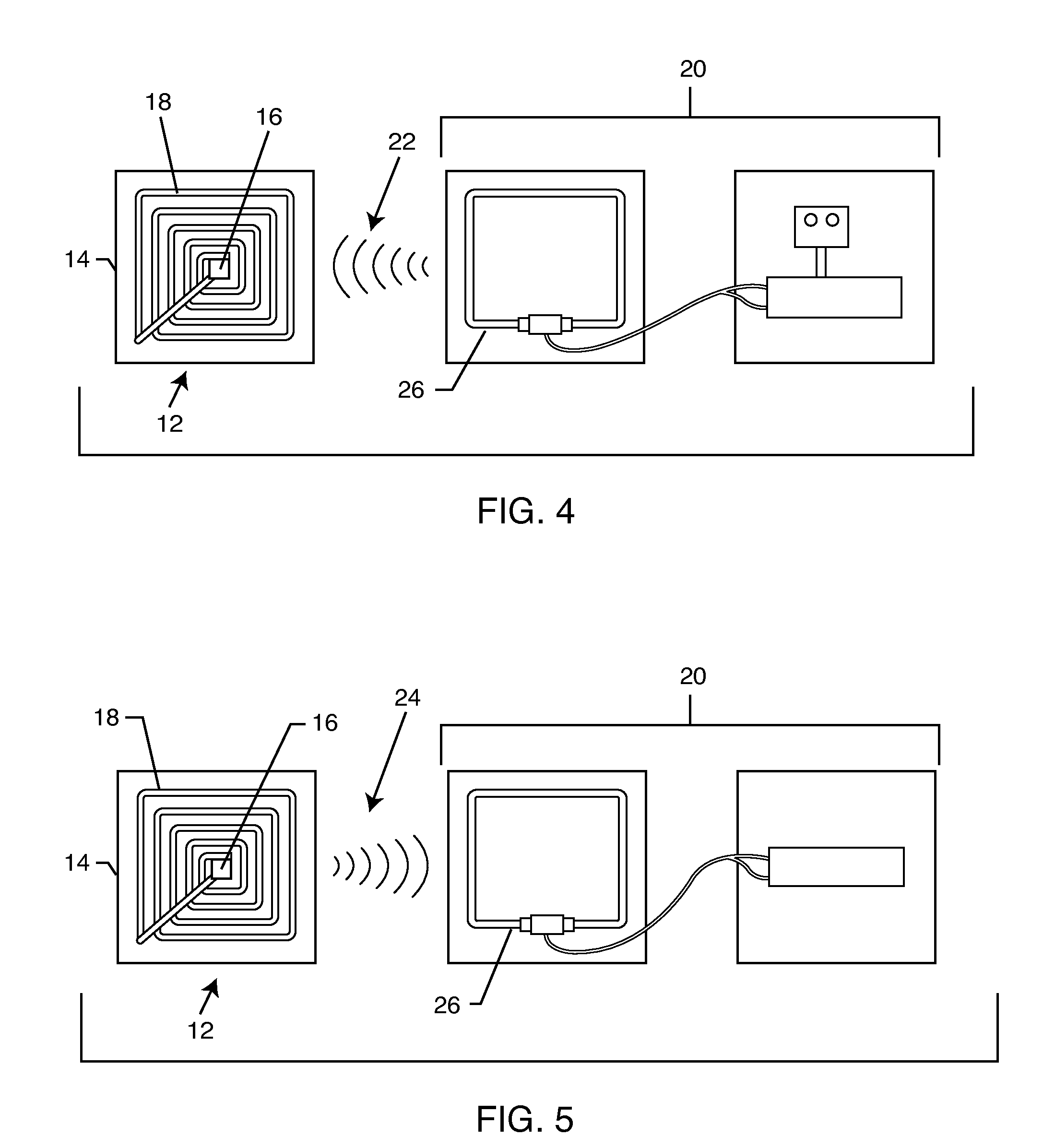Hermetically sealed RFID microelectronic chip connected to a biocompatible RFID antenna
a microelectronic chip and antenna technology, applied in the field of implantable and biocompatible radio frequency identification (rfid) tags, can solve the problems of limited information so provided, difficult identification, and inability to meet the needs of patients,
- Summary
- Abstract
- Description
- Claims
- Application Information
AI Technical Summary
Benefits of technology
Problems solved by technology
Method used
Image
Examples
Embodiment Construction
[0056]The present invention is directed to a radio frequency identification (RFID) system for use with active implantable medical devices (AIMDs) and an associated RFID tag. Specifically, the RFID system comprises an RFID tag implanted in a patient's body and associated with an implanted AIMD, and an interrogator in communication with the RFID tag. The novel tag comprises an electronic RFID chip disposed inside the hermetically sealed housing of an AIMD, and an external biocompatible antenna.
[0057]FIG. 3 is an outline drawing of an adult male pacemaker patient with an AIMD 10. The location for the AIMD 10, shown by a dashed ellipse, is typical of a right or left pectoral muscle implant. Right and left pectoral muscle implants are typical for a cardiac pacemaker or implantable cardioverter defibrillator (ICD). The right and left pectoral muscle region is chosen due to the easy access to the cephalic or subclavian veins for transvenous insertion of lead wires and electrodes down into ...
PUM
 Login to View More
Login to View More Abstract
Description
Claims
Application Information
 Login to View More
Login to View More - R&D
- Intellectual Property
- Life Sciences
- Materials
- Tech Scout
- Unparalleled Data Quality
- Higher Quality Content
- 60% Fewer Hallucinations
Browse by: Latest US Patents, China's latest patents, Technical Efficacy Thesaurus, Application Domain, Technology Topic, Popular Technical Reports.
© 2025 PatSnap. All rights reserved.Legal|Privacy policy|Modern Slavery Act Transparency Statement|Sitemap|About US| Contact US: help@patsnap.com



